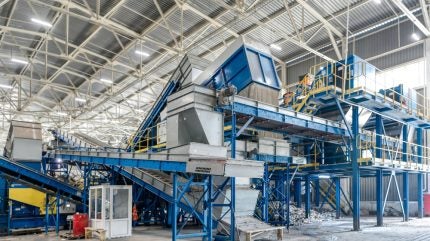
Packaging waste is one of the fastest-growing environmental challenges worldwide. As consumption rises and e-commerce expands, so does the volume of packaging discarded daily.
Effective packaging waste management technologies have become essential for reducing environmental harm, conserving resources, and supporting a circular economy.

Discover B2B Marketing That Performs
Combine business intelligence and editorial excellence to reach engaged professionals across 36 leading media platforms.
This article explores key innovations and approaches shaping the future of packaging waste management, helping readers understand how technology is transforming the way packaging waste is collected, processed, and reused.
Innovative sorting and recycling systems
One of the biggest hurdles in managing packaging waste is the complexity of materials involved. Packaging often combines paper, plastics, metals, and adhesives, making separation difficult.
Advanced sorting technologies are critical in overcoming this challenge.
Modern recycling centres increasingly employ automated sorting systems that use optical scanners, near-infrared (NIR) sensors, and artificial intelligence to identify and separate different types of packaging waste with remarkable accuracy.

US Tariffs are shifting - will you react or anticipate?
Don’t let policy changes catch you off guard. Stay proactive with real-time data and expert analysis.
By GlobalDataThese technologies can distinguish between various plastics such as PET, HDPE, and polypropylene, and separate materials that were previously impossible to sort efficiently.
Robotic arms equipped with machine learning algorithms further enhance sorting lines by recognising packaging shapes and materials, allowing for faster processing and higher purity of recycled materials.
This not only improves recycling rates but also reduces contamination that can lower the quality of recycled products.
Moreover, chemical recycling methods are gaining traction. Unlike traditional mechanical recycling, chemical recycling breaks down plastics to their molecular building blocks, enabling the production of new packaging materials with properties similar to virgin plastics.
This technology can process mixed or contaminated packaging waste that is unsuitable for conventional recycling, broadening the range of waste that can be reclaimed.
Biodegradable and compostable packaging solutions
As awareness of the environmental impact of packaging waste grows, the development of biodegradable and compostable packaging has accelerated. These innovative materials are designed to break down naturally after use, reducing the burden on waste management systems.
Biodegradable packaging is typically made from natural polymers such as starch, cellulose, or polylactic acid (PLA), which decompose under specific conditions. Compostable packaging goes a step further by breaking down completely into non-toxic substances in industrial composting facilities.
While these materials offer promising alternatives to conventional plastics, their environmental benefits depend heavily on proper waste collection and disposal infrastructure.
If biodegradable packaging ends up in landfill or littered environments, degradation may be slow or incomplete, negating intended advantages.
Technologies supporting compostable packaging include smart labelling systems that inform consumers and waste handlers about the correct disposal routes. Digital markers and QR codes can indicate whether packaging is compostable, recyclable, or needs special treatment.
This helps reduce contamination in recycling streams and ensures compostable waste reaches suitable facilities.
The integration of biodegradable materials into packaging waste management systems highlights a growing trend towards designing packaging that fits seamlessly into circular waste processes, reducing landfill reliance.
Waste-to-energy and circular economy integration
Waste-to-energy (WTE) technologies offer a practical solution for managing packaging waste that cannot be recycled or composted. These systems convert waste materials into usable energy, such as electricity or heat, through processes like incineration, pyrolysis, and gasification.
Modern WTE plants are designed to minimise harmful emissions and maximise energy recovery, providing a sustainable alternative to landfill disposal. By extracting value from residual packaging waste, these technologies reduce the volume of waste sent to landfill and support energy demands, especially in urban areas.
At the same time, many companies and municipalities are embedding packaging waste management within broader circular economy frameworks. The circular economy aims to keep resources in use for as long as possible by designing products and packaging with reuse, repair, and recycling in mind.
Digital tracking technologies, such as blockchain and IoT sensors, are being used to improve traceability and transparency throughout packaging supply chains. This ensures packaging waste is properly collected, sorted, and reintegrated into production cycles.
Extended Producer Responsibility (EPR) schemes are also playing a key role by requiring manufacturers to take financial or physical responsibility for the end-of-life management of their packaging. This incentivises the design of packaging that is easier to recycle and encourages investment in waste management technologies.
Combining waste-to-energy with circular economy principles creates a multi-layered approach that reduces environmental impact, conserves raw materials, and supports sustainable packaging futures.
Ultimately, future of packaging waste management lies in a combination of advanced sorting and recycling technologies, innovative biodegradable materials, and integrated waste-to-energy systems within circular economy frameworks.
Together, these developments promise to make packaging waste less of a burden on the environment, turning a critical challenge into an opportunity for sustainable innovation.





